Abstract
T4 bacteriophage (phage)-infected cells show a marked increase in latent-period length, called lysis inhibition, upon adsorption of additional T4 phages (secondary adsorption). Lysis inhibition is a complex phenotype requiring the activity of at least six T4 genes. Two basic mysteries surround our understanding of the expression of lysis inhibition: (i) the mechanism of initiation (i.e., how secondary adsorption leads to the expression of lysis inhibition) and (ii) the mechanism of lysis (i.e., how this signal not to lyse is reversed). This study first covers the basic biology of the expression of lysis inhibition and lysis of T4-infected cells at high culture densities. Then evidence is presented which implies that, as with the initiation of lysis inhibition, sudden, lysis-associated clearing of these cultures is likely caused by T4 secondary adsorption. For example, such clearing is often observed for lysis-inhibited T4-infected cells grown in batch culture during T4 stock preparation. The significance of this secondary adsorption-induced lysis to wild T4 populations is discussed. The study concludes with a logical argument suggesting that the lytic nature of the T4 phage particle evolved as a novel mechanism of phage-induced lysis.
Full text
PDF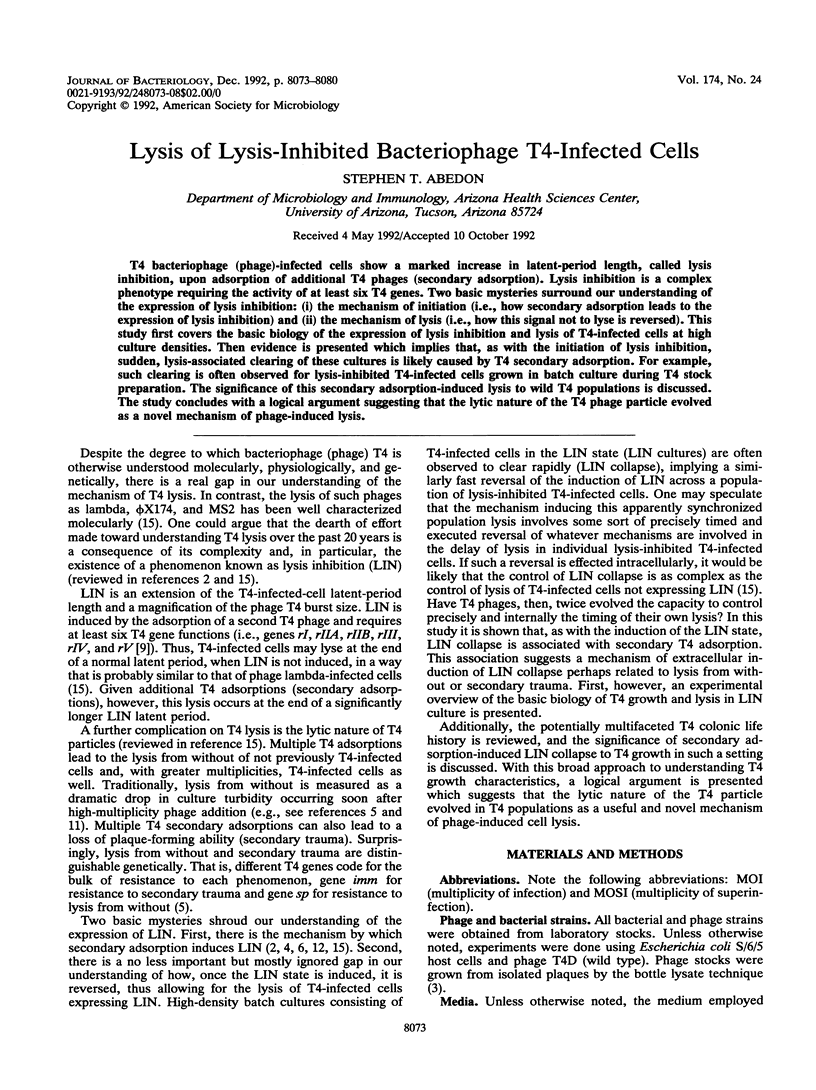
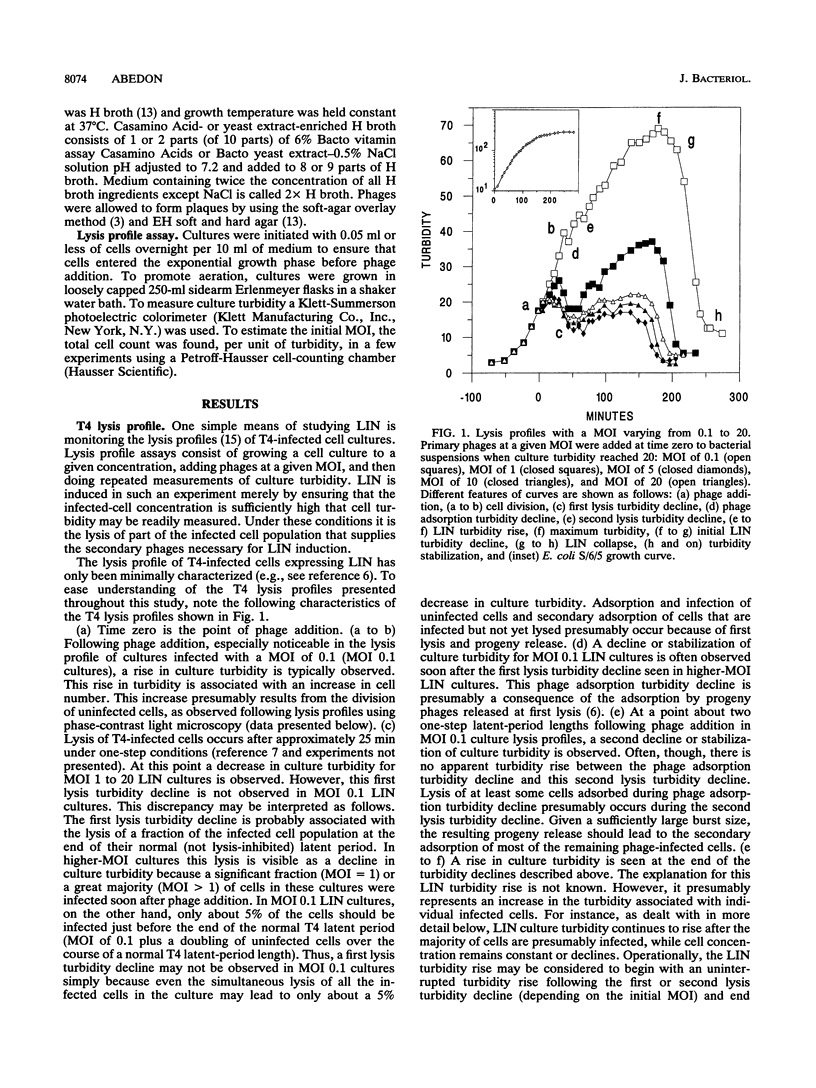
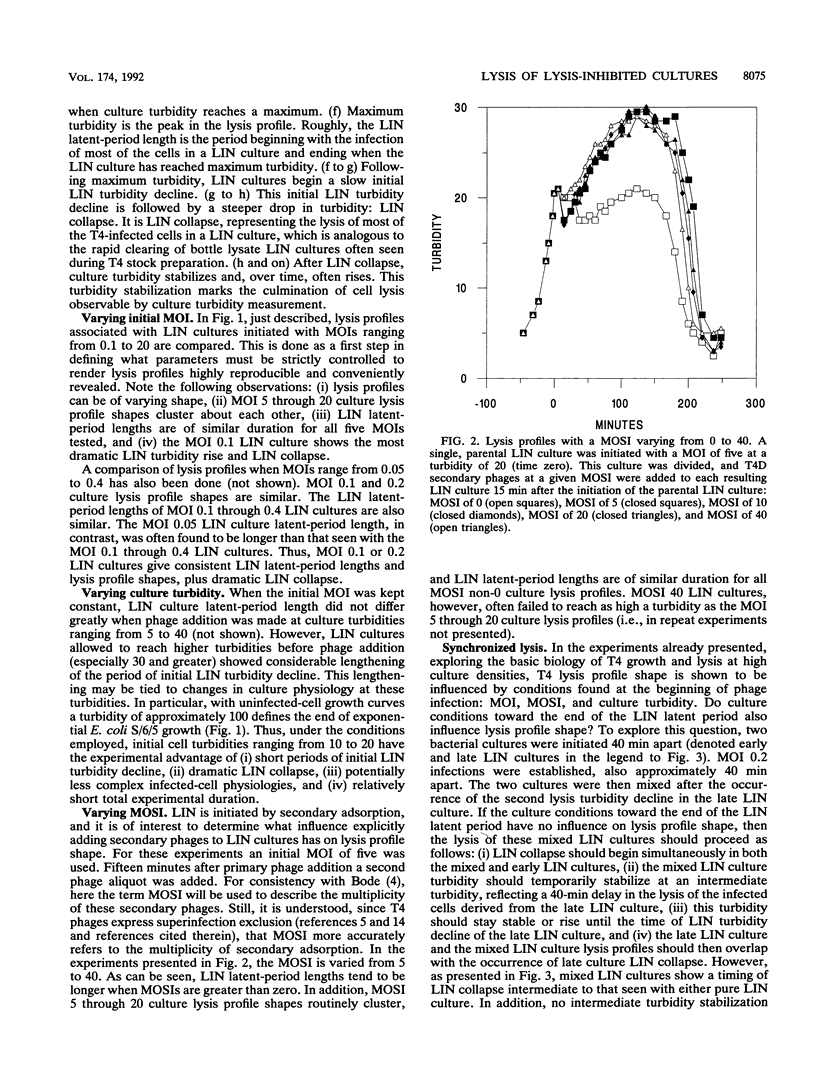
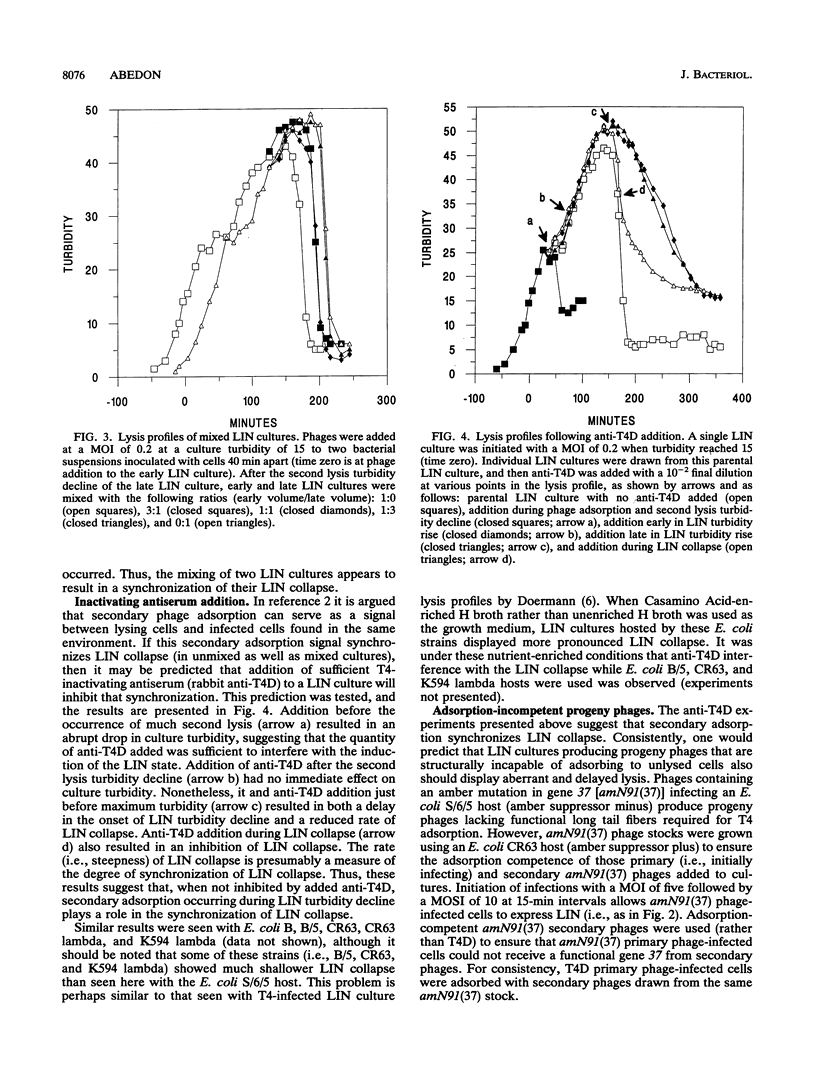
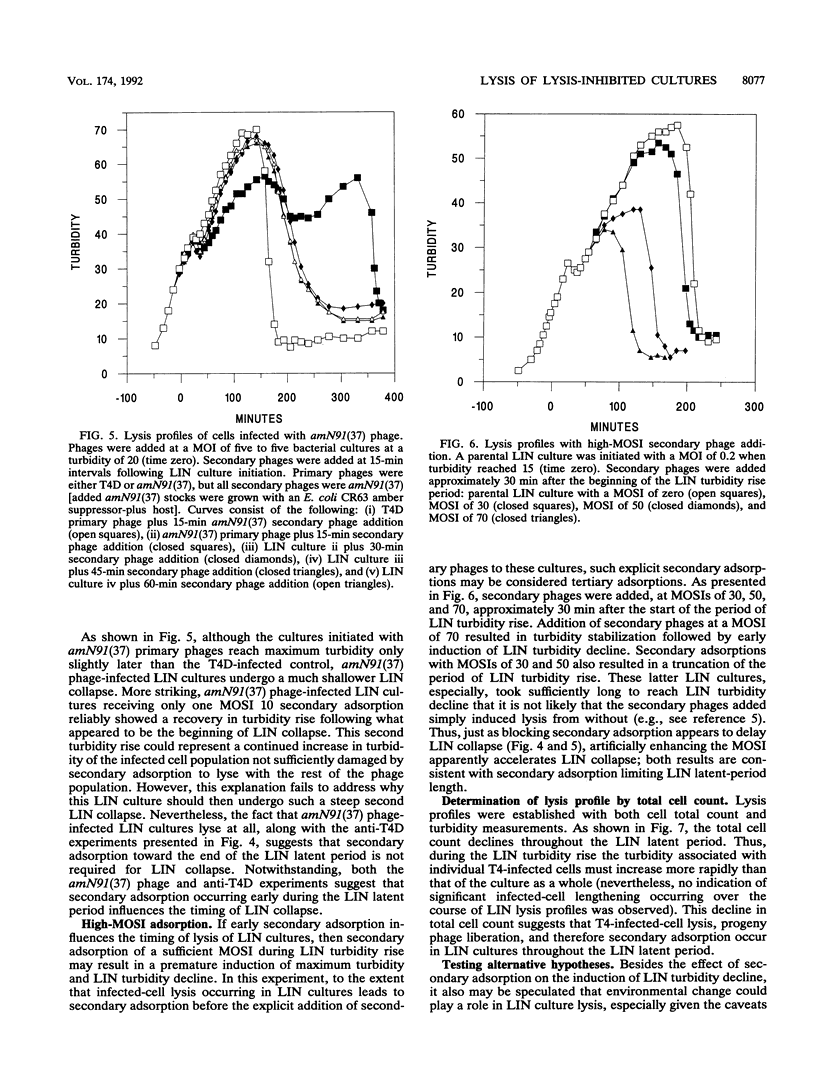

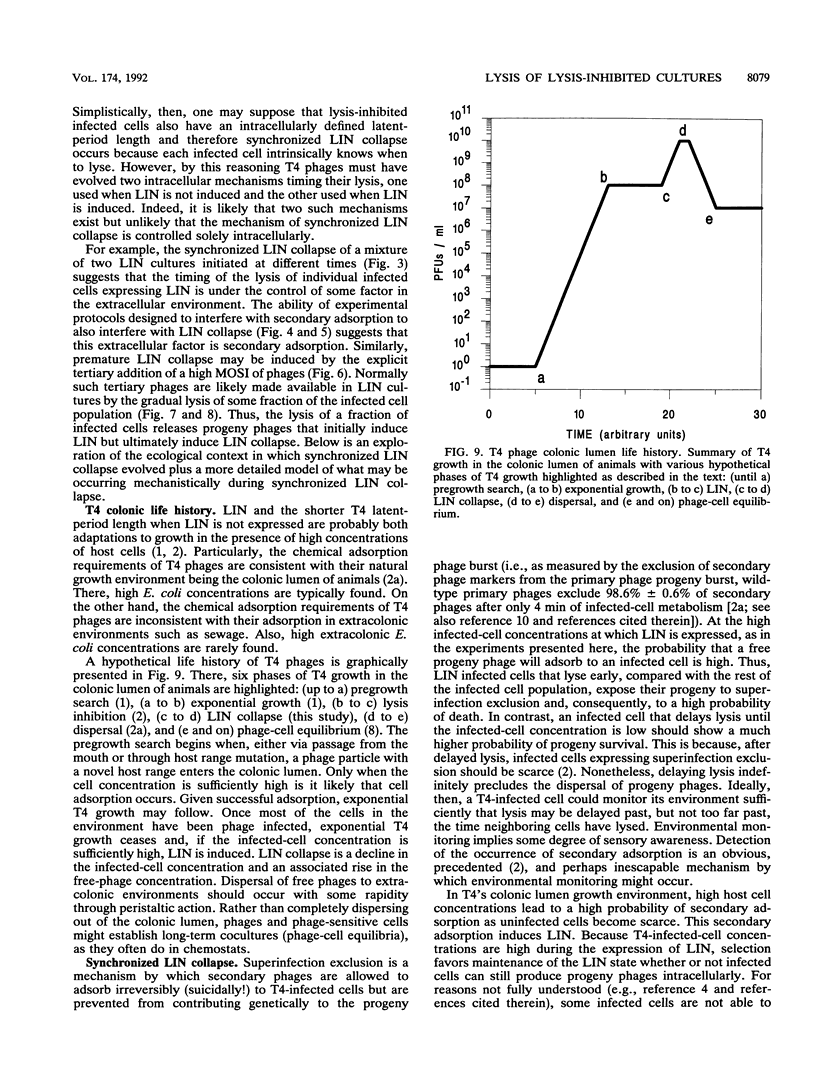

Selected References
These references are in PubMed. This may not be the complete list of references from this article.
- Abedon S. T. Selection for lysis inhibition in bacteriophage. J Theor Biol. 1990 Oct 21;146(4):501–511. doi: 10.1016/s0022-5193(05)80375-3. [DOI] [PubMed] [Google Scholar]
- Bode W. Lysis inhibition in Escherichia coli infected with bacteriophage T4. J Virol. 1967 Oct;1(5):948–955. doi: 10.1128/jvi.1.5.948-955.1967. [DOI] [PMC free article] [PubMed] [Google Scholar]
- Cornett J. B. Spackle and immunity functions of bacteriophage T4. J Virol. 1974 Feb;13(2):312–321. doi: 10.1128/jvi.13.2.312-321.1974. [DOI] [PMC free article] [PubMed] [Google Scholar]
- DOERMANN A. H. The intracellular growth of bacteriophages. I. Liberation of intracellular bacteriophage T4 by premature lysis with another phage or with cyanide. J Gen Physiol. 1952 Mar;35(4):645–656. doi: 10.1085/jgp.35.4.645. [DOI] [PMC free article] [PubMed] [Google Scholar]
- Doermann A. H. Lysis and Lysis Inhibition with Escherichia coli Bacteriophage. J Bacteriol. 1948 Feb;55(2):257–276. doi: 10.1128/jb.55.2.257-276.1948. [DOI] [PMC free article] [PubMed] [Google Scholar]
- Obringer J. W. The functions of the phage T4 immunity and spackle genes in genetic exclusion. Genet Res. 1988 Oct;52(2):81–90. doi: 10.1017/s0016672300027440. [DOI] [PubMed] [Google Scholar]
- Okamoto K., Yutsudo M. Participation of the s gene product of phage T4 in the establishment of resistance to T4 ghosts. Virology. 1974 Apr;58(2):369–376. doi: 10.1016/0042-6822(74)90072-5. [DOI] [PubMed] [Google Scholar]
- Rutberg B., Rutberg L. Role of superinfecting phage in lysis inhibition with phage T4 in Escherichia coli. J Bacteriol. 1965 Oct;90(4):891–894. doi: 10.1128/jb.90.4.891-894.1965. [DOI] [PMC free article] [PubMed] [Google Scholar]
- STEINBERG C. M., EDGAR R. S. A critical test of a current theory of genetic recombination in bacteriophage. Genetics. 1962 Feb;47:187–208. doi: 10.1093/genetics/47.2.187. [DOI] [PMC free article] [PubMed] [Google Scholar]
- Vallée M., De Lapeyrière O. The role of the genes imm and s in the development of immunity against T4 ghosts and exclusion of superinfecting phage in Escherichia coli infected with T4. Virology. 1975 Sep;67(1):219–233. doi: 10.1016/0042-6822(75)90419-5. [DOI] [PubMed] [Google Scholar]
- Young R. Bacteriophage lysis: mechanism and regulation. Microbiol Rev. 1992 Sep;56(3):430–481. doi: 10.1128/mr.56.3.430-481.1992. [DOI] [PMC free article] [PubMed] [Google Scholar]


